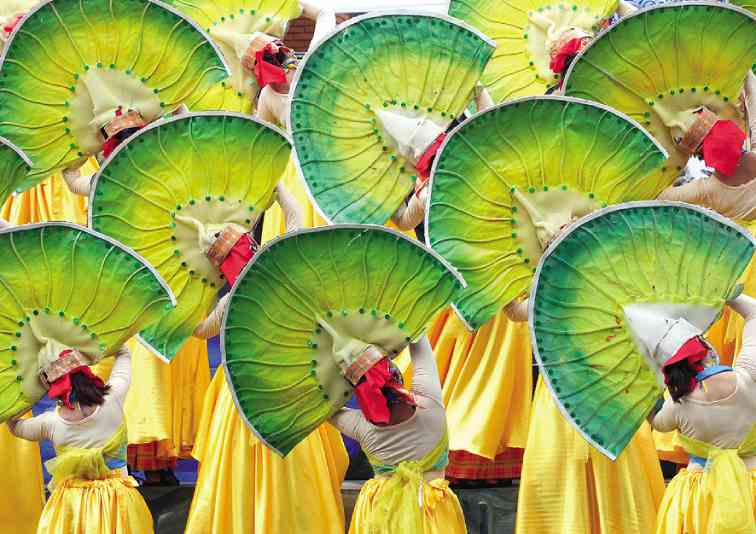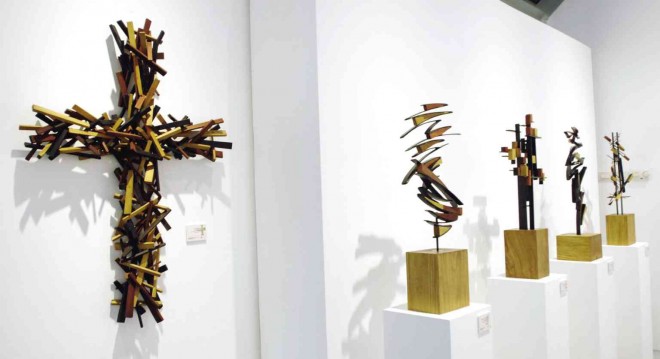
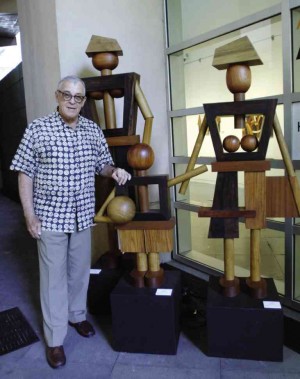
Some artists thrive on visual tension. Contrasts in colors and forms, polarity of abstraction and figuration, asymmetry in composition, even irony in visual narrative enrich their art. This results in complexity in the artwork, producing layer upon layer for interpretation.
It is at once apparent in the joint exhibit of Swiss jeweler-sculptor Hans Brumann and French diplomat-photographer Hugues Antoine Suin—“Strength and Elegance/Color and Energy”—until April 21, in ArtistSpace at the annex of Ayala Museum, Makati Ave. and De la Rosa St., Greenbelt Park, Makati City.
“Strength and Elegance” is Brumann’s collection of 25 sculptural pieces, while “Color and Energy” refers to Suin’s suite of 20 photographs in limited prints of three each. There’s no theme that holds the collections together. The viewer’s first impression on surveying the gallery is— they’re just patterns.
Yet, it is precisely the resemblance of patternmaking in the photos and the sculptures, the visual tension in their abstracted figures, and the contrast of the photos’ bold colorism and the sculptures’ muted color tonality, that give the whole exhibit a thematic coherence.
Exuberant record
The show’s blending of mediums, photography and sculpture, is just a coincidence, says Brumann. “I didn’t have enough items to fill up the place, so…”
He and Suin happened to be both members of Alliance Française, and when they met up, he broached the idea of a joint exhibit. “It was a fast decision,” he says.
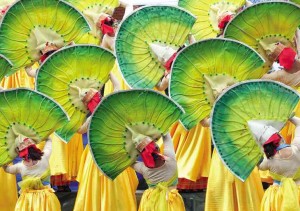
Didi Dee of Hiraya Gallery, which presents the show, encouraged the two artists as this was their chance to work together.
“Dinagyang Dazzle” is Suin’s exuberant record of the country’s premier festival, a series of photos of street performers and costumery “captured in situ.”
Upon retirement in the country, the former diplomat had taken photography as hobby and started recording Philippine festivals. He did consider photos of Baguio’s Panagbenga for this show but decided his shots of Iloilo City’s Dinagyang were more visually appealing.
Swirling forms and voluptuous colors characterize each piece, in what may be called Miami Baroque Tropicale as inspired by Versace. No high-minded theme here—if ever, just élan vital, as vividly expressed by the vitality of motion and hue.
Struggle to create
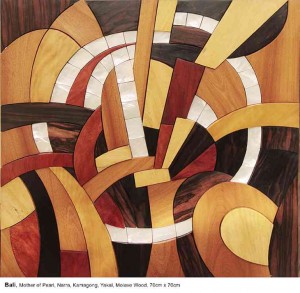
Brumann’s pieces consist of wall reliefs, crosses and free-standing sculptures, in hardwood, mother-of-pearl and steel.
These are abstract (“97 Triangulars,” “Abstract” IV and VI, “Standing Sculpture” 1-4); abstracted figuration (“Bali,” “Barung-barong,” “Three Columns,” “In the Trees,” “Salamangkero,” “Family”); and crosses.
“I’ve been intrigued by the form of the cross since I was 16, when I was apprenticing with a goldsmith in Switzerland,” he says. “I’ve always wanted to make a modern cross.”
The 10 crosses in the exhibit—either in plain hardwood or in mother-of-pearl with natural blister pearls—are all minimalist, whether curvilinear or in rigid lines. He points out that the horizontal is always placed over the vertical, which he learned from his mentor.
Though he may work on plain hardwood or a combination of various wood species in a piece, the sculptor is known for blending wood with mother-of-pearl or Black Lip shell. No other artist in the country does that combination, from which the concept of “elegance and strength” derives.

A piece may look easy on the eye (always a characteristic of elegance), but Brumann says it’s a struggle to create one, especially in the polishing of the mother-of-pearl. He works with two artisans who have been with him for about 15 years.
“Abstract” VI, in mother-of-pearl on kamagong, took three months to finish. “Cross” 29, composed of small strips of kamagong, narra, molave and yakal, was relatively easier to create, taking only two to three weeks.
“Family,” also a combination of the four hardwood species, took a year to finish, and only because it is a group sculpture composed of much bigger pieces.
Unseen aspect
For his sculptural work, Brumann says he’s been inspired by National Artist Arturo Luz and “Picasso, definitely.”
He reserves his biggest rave for Cellini, though: “He was a sculptor, goldsmith, and also an excellent silversmith and engraver. He was all at the same time. He did jewelry and really huge pieces. Everything that we try to master he had already mastered in the 16th century.”
One aspect of Brumann as artist the public has not yet known is his being a painter. He has 25 watercolor pieces he has yet to frame, landscapes and urbanscapes that he says are “not as technically advanced as those of other watercolorists around.”
He recalls he had painted only one piece in oil, when he was 12—“and it was already an abstract, can you imagine?”
We can imagine that, once these pieces will be exhibited, the public will get a jolt. Such art, however old, is always new.

